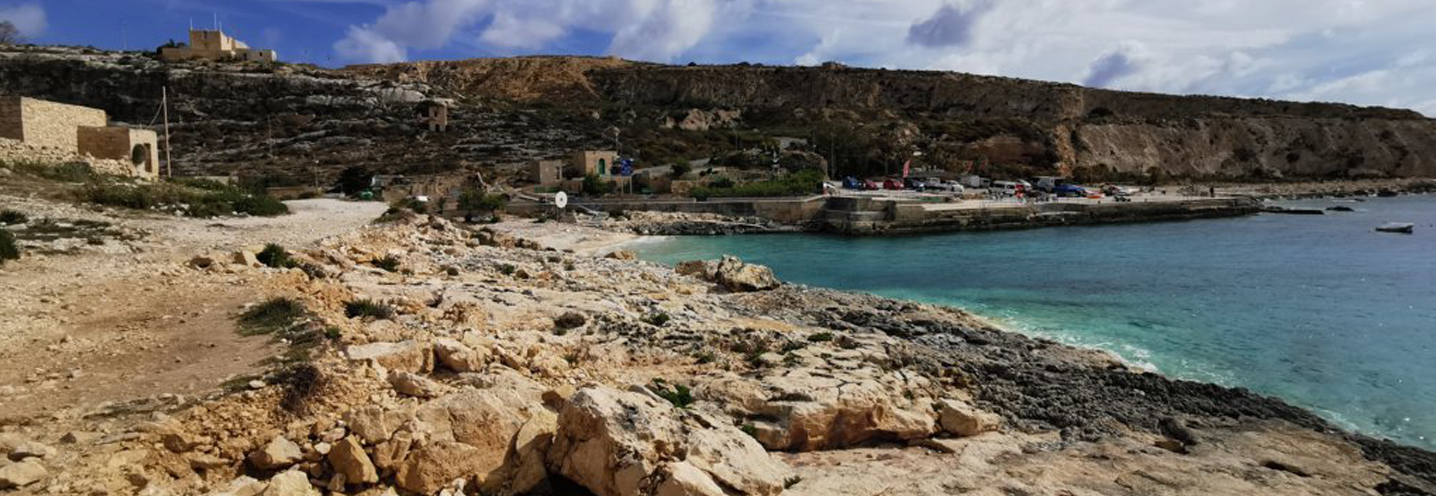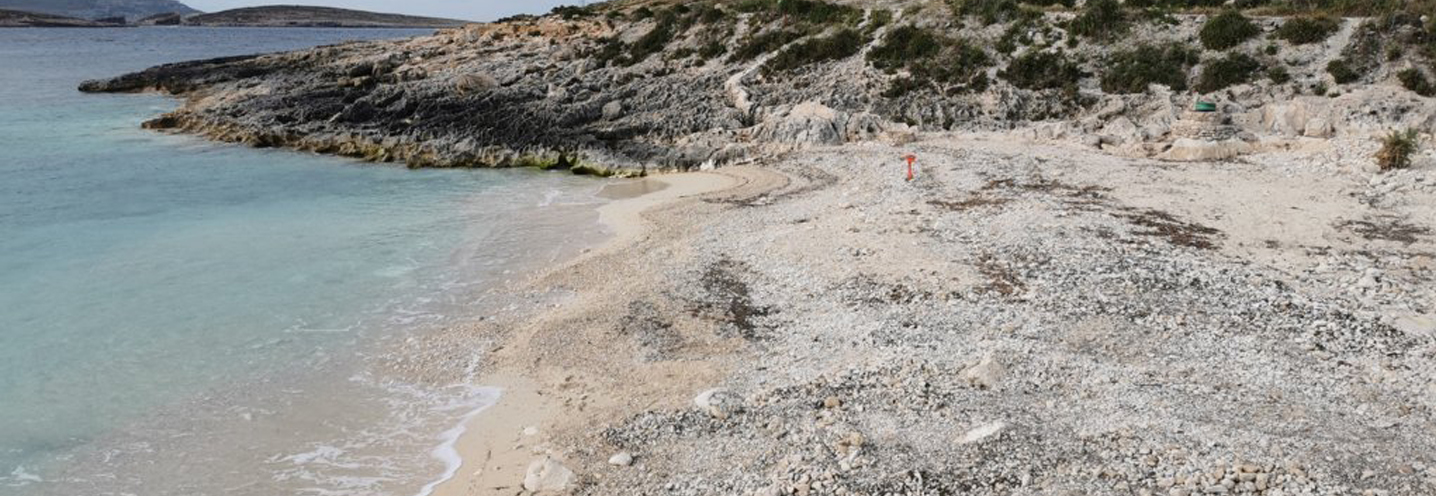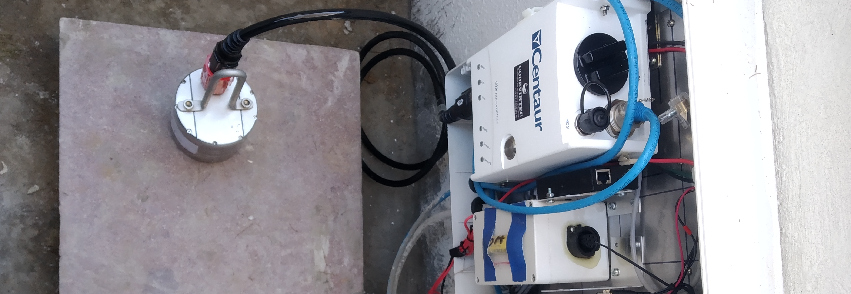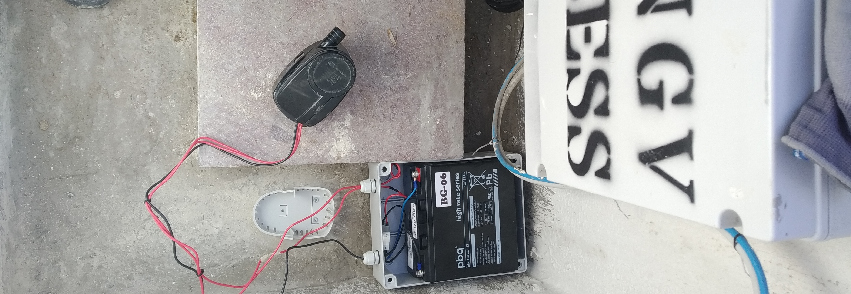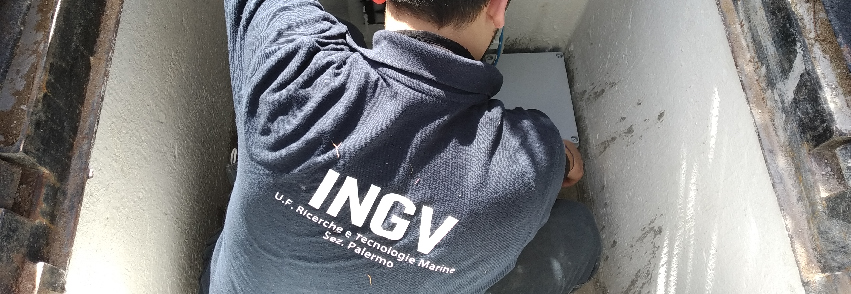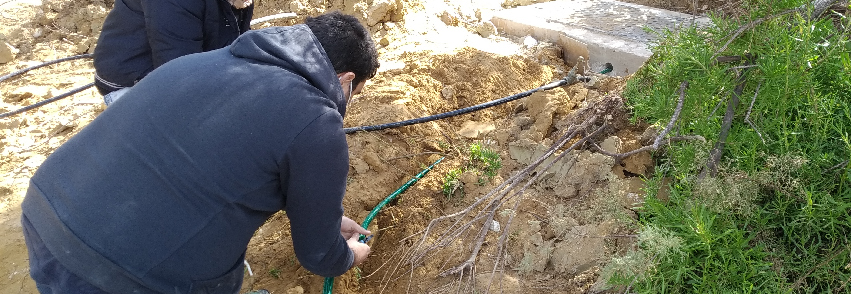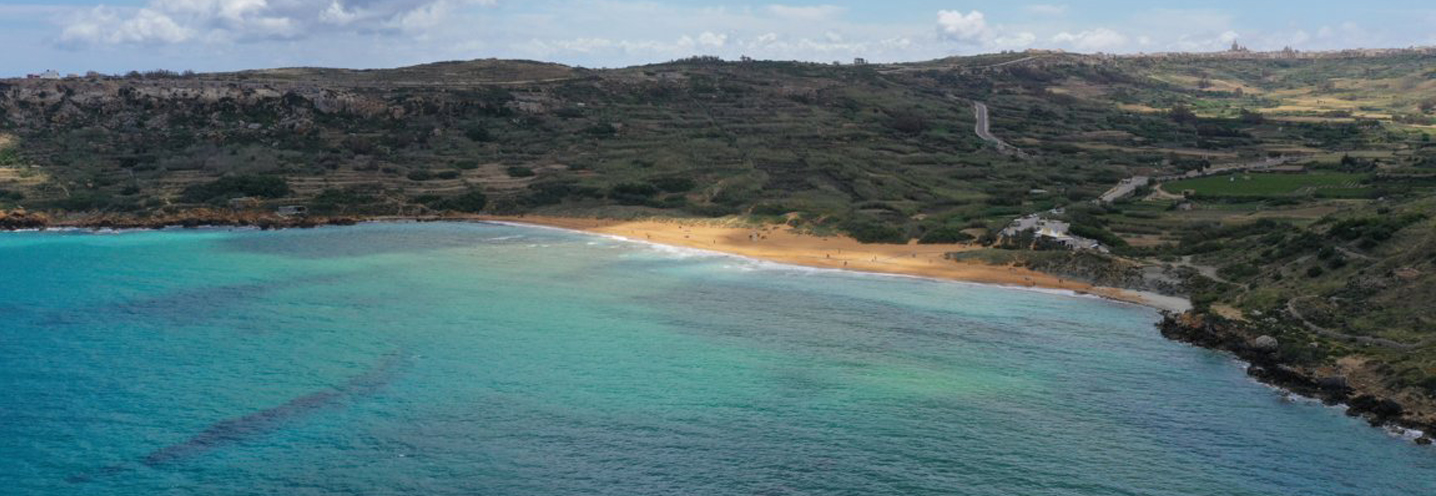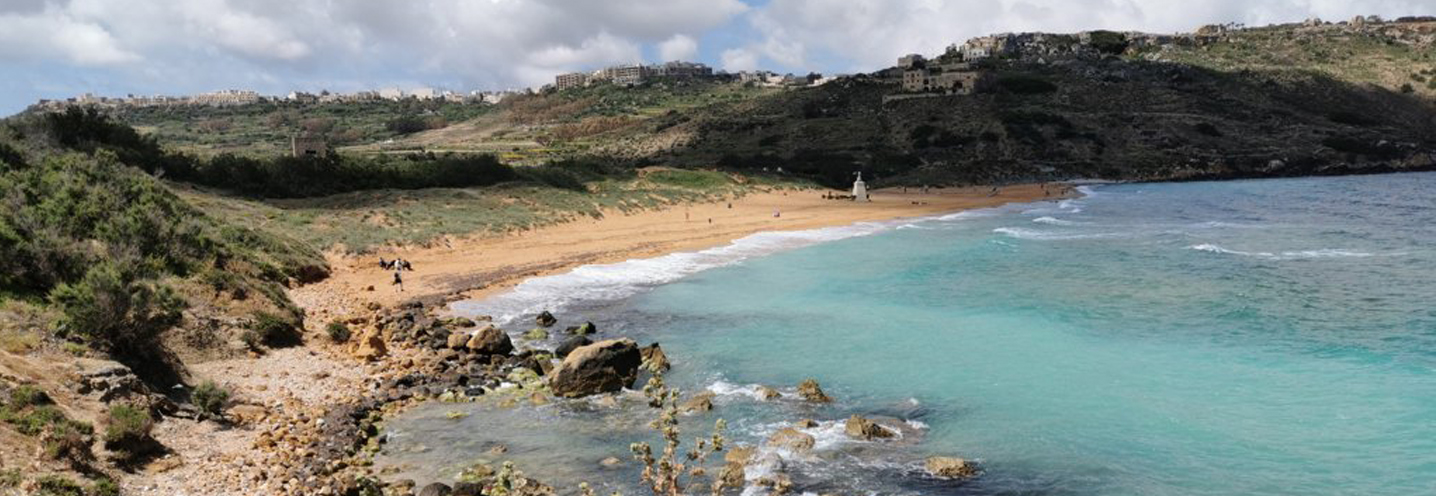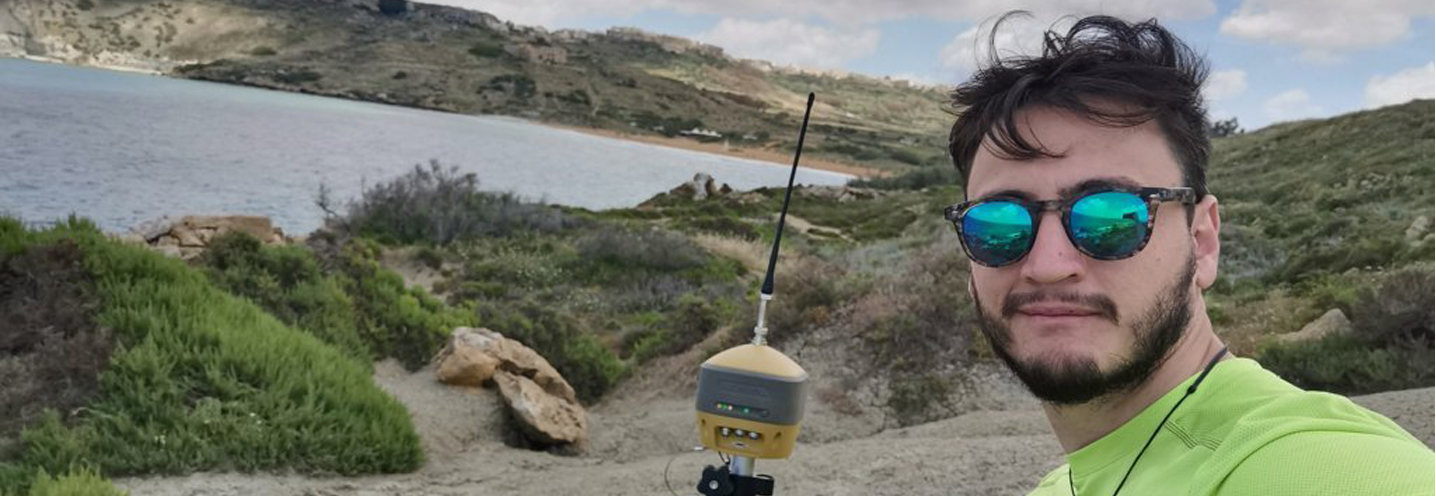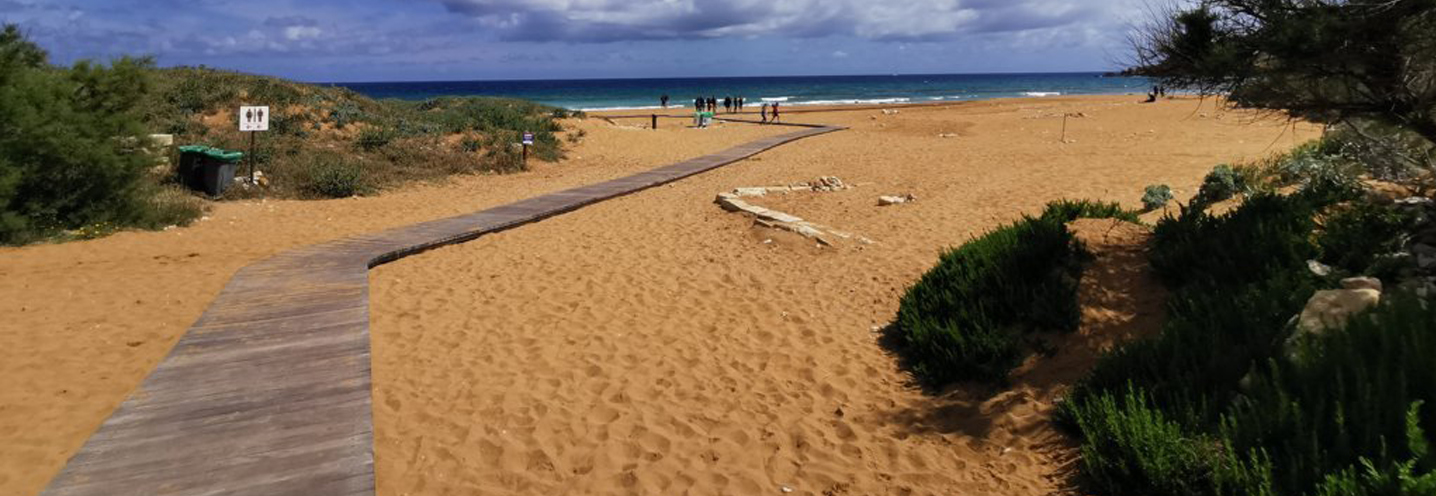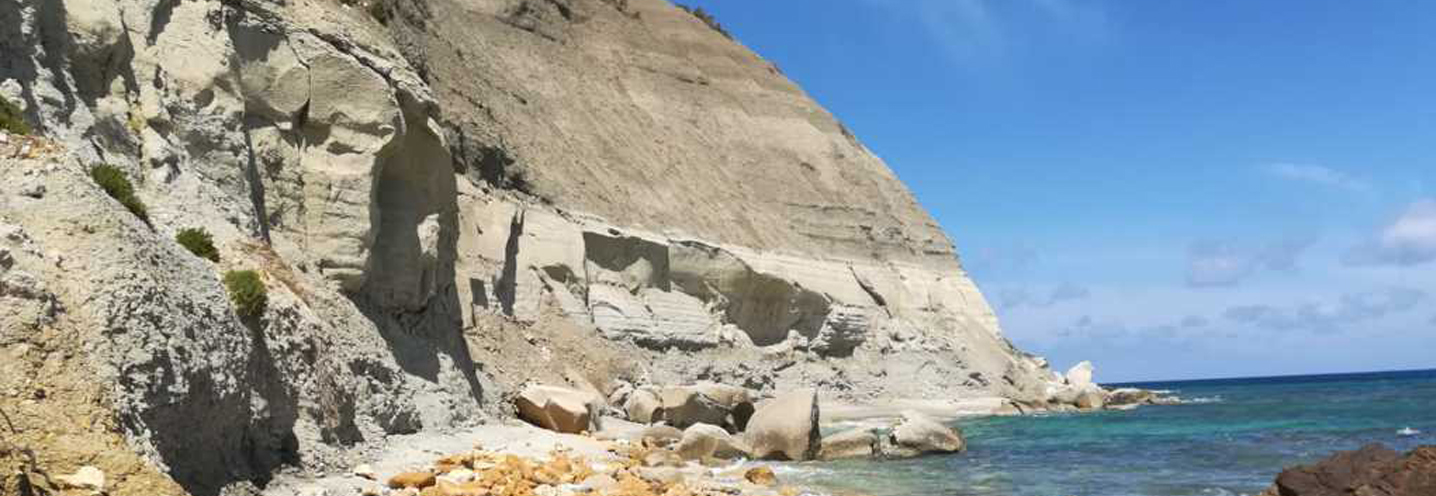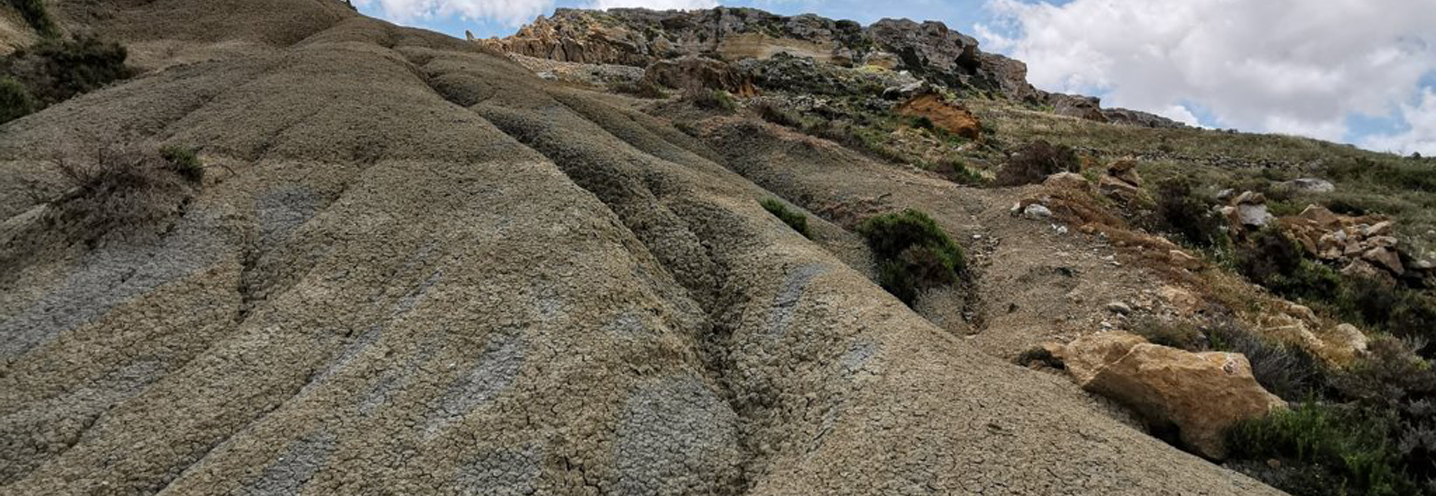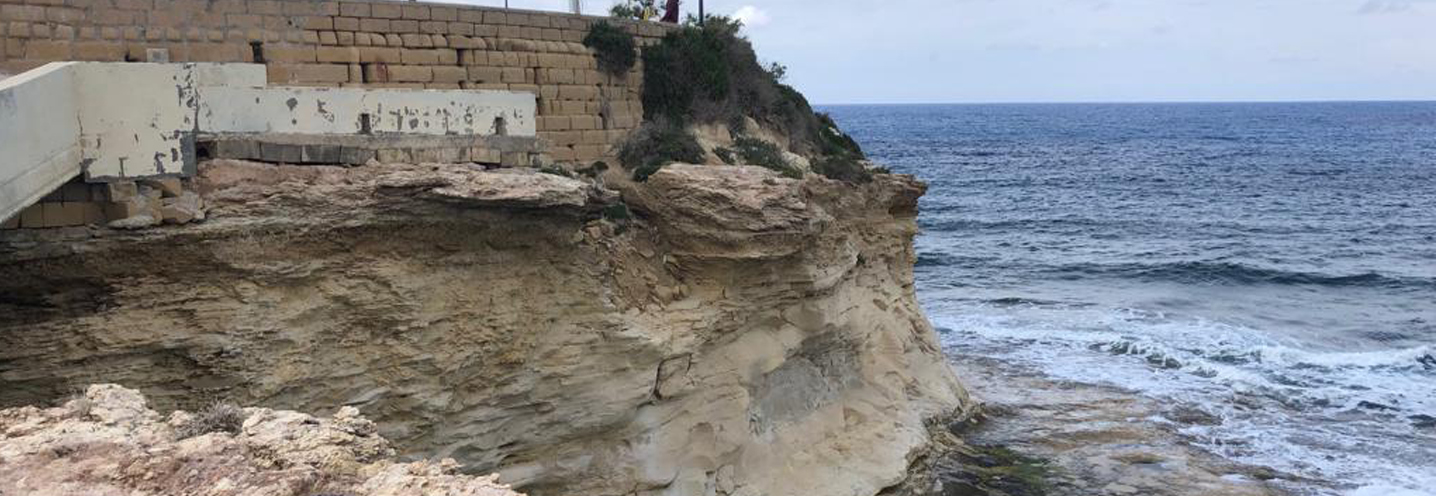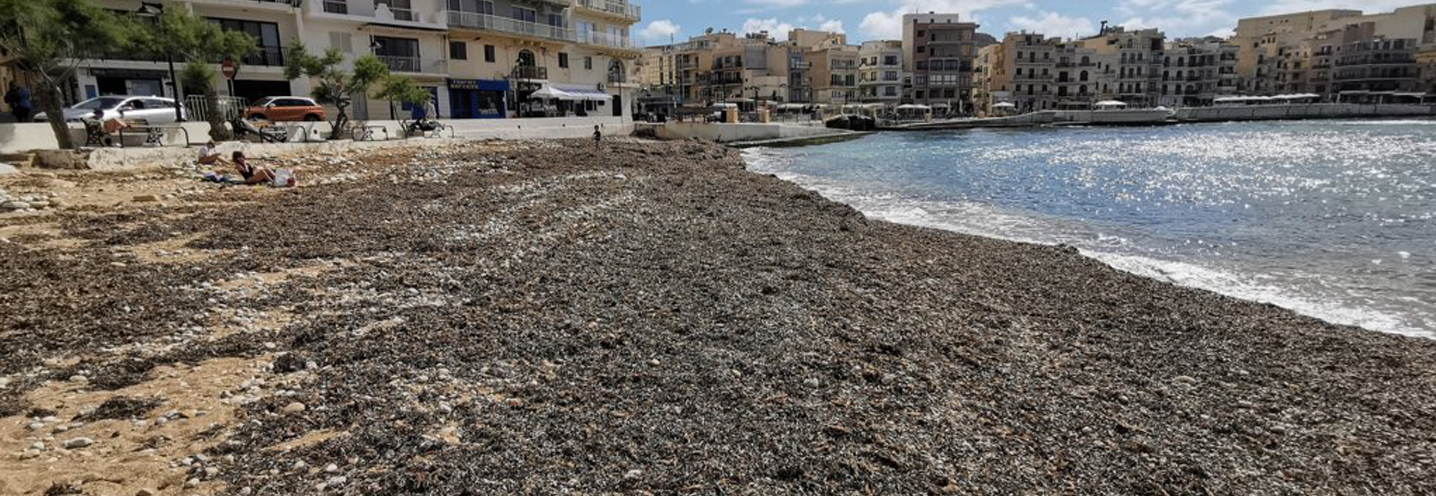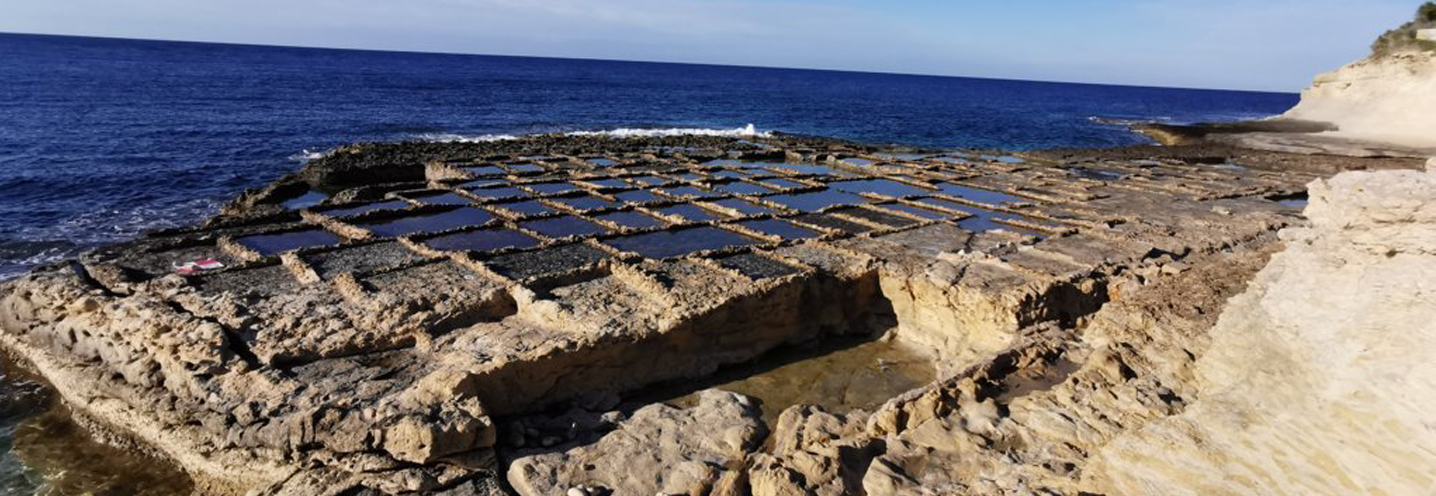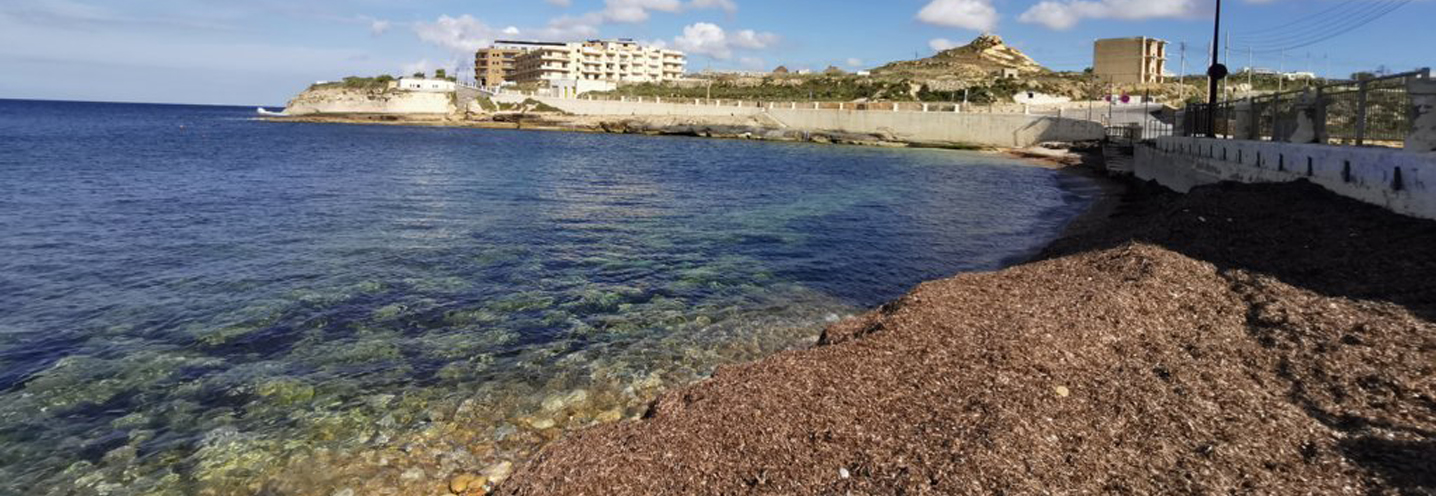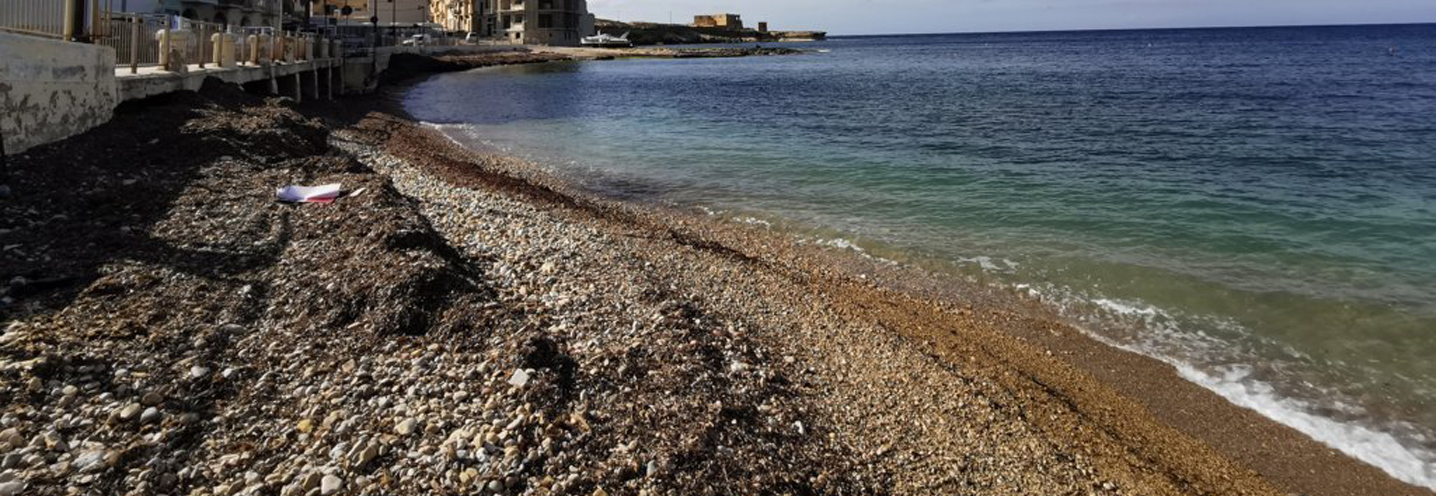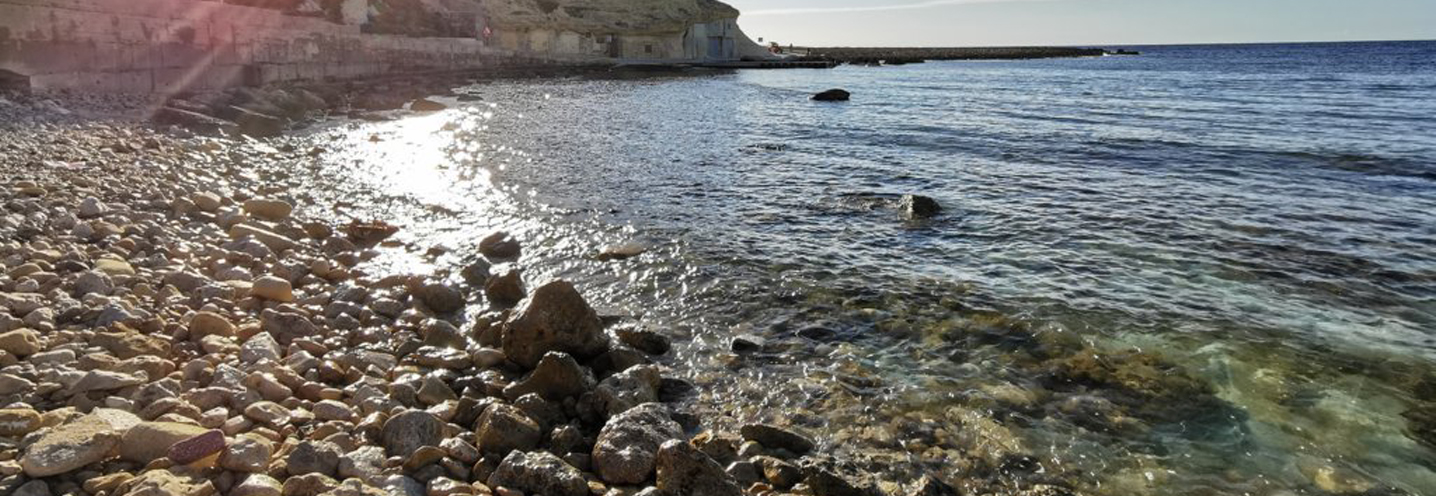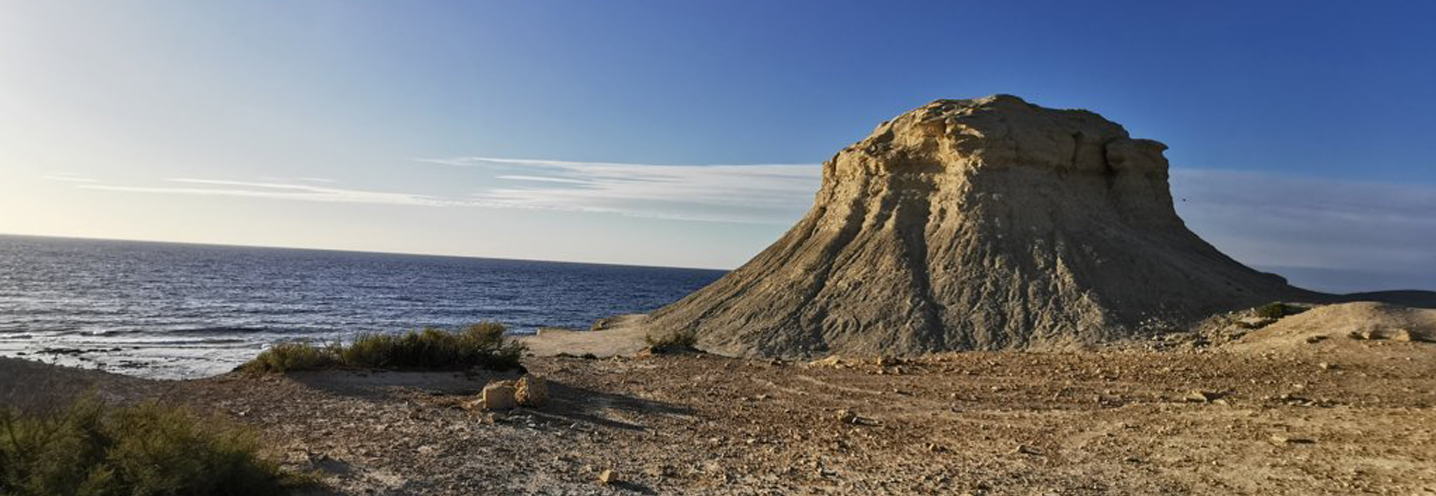- Qala – Hondok Ir – Rummien Bay
Pocket beach code: MT106GZ01
The Pocket Beach (PB) of Hondoq Ir-Rummien Bay is located in the south-eastern part of the Island of Gozo, specifically in the village of Qala.
It is bounded by two promontories and on the northern promontory there is a large quay and a parking lot. There is no real cliff behind the beach.
In the area behind the PB and in the northern promontory, wackestone and packstone with strombid gastropods emerge, while on the southern promontory limestone with abundant coralline algae and packstone and wackestone with presence of glauconite emerge. In the rear area, blue clays, wackestones and pelagic marls emerge.
The sediments that make up the PB fall into the classes ranging from medium sands to boulders. The mineralogical composition is mainly carbonate.
- Xaghra – Ramla Bay
Pocket beach code: MT107GZ02
The Pocket Beach (PB) of Ramla Bay is located in the northern part of the Island of Gozo, specifically in the village of Xaghra. It is probably the most renowned and popular tourist area in Gozo.
Ramla’s golden sandy beach is nestled between two rocky promontories that are about 75m above sea level. There is no cliff behind the beach.
In the area immediately behind the PB, limestone with fine-grained planktonic foraminifers emerge. Both promontories, on the other hand, have outcrops of blue clay and pelagic marls with planktonic foraminifer bands, as well as coarse-grained wackestone and packstone with coralline algae, molluscs and echinoderms.
The sediments that make up the PB fall granulometrically in the class of medium sands. Compositionally the clasts are mainly carbonate.
- Zebbug (Ghawdex) – Marsalforn Bay
Pocket beach code: MT108GZ03
The Pocket Beach (PB) of Marsalforn Bay is located in the northern part of the Island of Gozo, specifically in the municipality of Zebbug (Ghawdex).
It is characterised by two very prominent promontories and the area behind it is completely urbanized. There is a small marina in the western area and a road runs alongside the PB.
Lithologically, packstone and wackestone with glauconite emerge in the rear area, while the promontories consist mainly of white or light grey mudstone, as well as fine-grained planktonic foraminiferal limestones.
The PB sediments have granulometries between coarse sands and gravels, whose composition is mainly carbonate.
- Zebbug (Ghawdex) – Qbajjar Bay
Pocket beach code: MT109GZ04
The Pocket Beach (PB) of Qbajjar Bay is located in the northern part of the Island of Gozo, specifically in the village of Zebbug.
The PB is bounded to the west by the promotonry of il-Qolla l-Bajda, which does not exceed 15m above sea level and to the east by the Xwejni salt pans.The cliff behind the PB is of anthropogenic origin and is about 3m above sea level.
The area behind the PB is geologically made up of packstone and wackestone with the presence of glauconite, while the promontories mainly consist of white or light grey mudstones, as well as fine-grained planktonic foraminiferal limestones.
The beach is quite small, with sediments that fall into the grain size classes ranging from gravels to boulders, mainly carbonate. The beached Posidonia oceanica is abundant here.
- Zebbug (Ghawdex) – Xwejni Bay
Pocket beach code: MT110GZ05
The Pocket Beach (PB) of Xwejni Bay is located in the northern part of the Island of Gozo, specifically in the Gozitan village of Zebbug.
On the eastern part of the PB you find il-Qolla l-Bajda promontory and numerous salt pans on the west of the beach. The eastern promontory shows numerous geomorphological peculiarities and erosive phenomena. The altitude of the promontory and the cliff behind it is around 10m to 15m above sea level.
The area behind the PB is characterised by packstone and wackestone with glauconite, while the western promontory is characterised by white or light grey mudstone, as well as fine-grained planktonic foraminiferal limestones. Inland, blue clays and grey pelagic marls with bands rich in planktonic foraminifers emerge.
The sediments that make up the PB fall into the granulometric classes of pebbles and boulders, with a predominantly carbonate composition.





